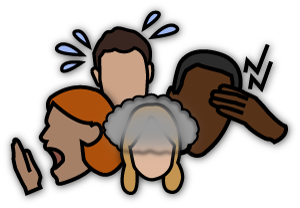Ongoing Management
 |
Naturally, you will want to see a trend of improving symptoms. Clusters of symptoms can resolve spontaneously.
|
- The majority (80–90%) of concussions clinically resolve in a short period (1-4 weeks), although the recovery time frame may be longer in children and adolescents.” (Berlin 2016 in McCrory 2017)
- High school athletes (ages 14–18) tend to recover more slowly than collegiate athletes.
(IOM, 2014)
- The first two bullets demonstrate that there is inconsistency in how mTBI injuries progress. This reinforces the importance of monitoring your patient carefully.
- Most young people tend to recover well as long as they stick to low-risk activities.
- Too much activity or exertion too soon can affect the recovery pattern by increasing intracranial pressure, worsening the symptoms of the concussion. Symptom reoccurrence with over-exertion is commonplace.
- The injured youth may be asymptomatic at rest, but that doesn’t mean the patient is truly without symptoms.
- When the patient is symptom-free, the patient should be able to ease back into high-level activities without exacerbating his or her condition.
- If recovery is not trending positive, rule out behavioral problems (e.g., not complying with treatment plan in some way) as a cause. The patient’s symptom diary can be of great help in identifying such issues.
- Resolved symptoms do not necessarily mean that an individual is fully recovered. Delayed recovery will be discussed in detail in Module 6.
- “Recent literature suggests that the physiological time of recovery may outlast the time for clinical recovery. The consequence of this is as yet unknown, but one possibility is that athletes may be exposed to additional risk by returning to play while there is ongoing brain dysfunction” (p.5, McCrory et al, 2017)
Assess as Needed
| Mention of any specific health care facility or organization in the videos reflects an individual’s specific experience and is not intended as an endorsement from this site. |
Any assessment you use should include all five domains: symptom clusters, physical signs , behavior changes, cognitive impairment, and sleep disturbance.
 |
Compare the ongoing assessments with the initial clinical assessments, and document the patient’s progress. Symptoms may show up an hour or more after an activity (or may be immediate). Reviewing the pattern of activity and timing of symptom increases can help guide future behavior and activity.
If symptoms get worse, you need to communicate with the team, which as a group can recommend modified activities. Useful assessment tools are found on the Resources page of this course. |
